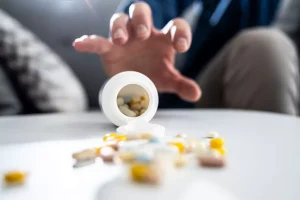No products in the cart.
Recognizing Substance Abuse and Addiction in Older Adults And How to Help Leave a comment

Whether negative or positive, you should inform all clients of their screening results. Read further to learn the specific steps to take next, which will differ based on the client’s substance abuse in older adults screening results. Primary Care PTSD Screen for DSM-5The Primary Care PTSD Screen for DSM-5419 (PC-PTSD-5) is a five-item questionnaire that identifies clients likely to have PTSD.
Medical Detox
As a result, OUD is often underdiagnosed in these patients, he said. Single-item screening tools like the TAPS and OWLS can be used to assess if the benefits of an opioid outweigh a patient’s risk for addiction. Recent research has found that people addicted to cocaine in their youth may have an accelerated age-related decline in temporal lobe gray matter, which increases their risk of addiction. This is because cocaine use during adolescence and young adulthood can cause brain structure and function changes that persist into later life.
Residential or Outpatient Treatment
About 7 percent had suicidal thoughts, compared with 2 percent who didn’t report substance disorders. Yet very few of these seniors underwent treatment in the past year or even sought treatment. Clinical research is beginning to elucidate the consequences of unrecognized substance abuse or dependence on an aging population. Complications that occur with increasing frequency with age, such as medical comorbidity, cognitive impairment, and frailty, contribute to the potential adverse interactions between substance misuse and an aging brain. Behavioral therapy is often used during substance abuse and addiction treatment, as it helps individuals to find and recognize the connections between potential triggers, negative thoughts, and subsequent actions. Emotional, social, or physical triggers may be unique to an older adult and may center around certain life events or circumstances that a younger person may not relate to.
Prescription Drug Abuse Among Seniors
Substance abuse is difficult to recognize in the older adults, but once identified, presents its own challenges as only 18% of substance abuse treatment programs are designed for this growing population. Substance abuse overall may increase the risk of fractures secondary to recurrent falls, memory loss, sleep disturbances, anxiety, and depression. In this article, we will review the signs and symptoms, risk factors, screening tools, Diagnostic and Statistical Manual of Mental Disorders, Fifth Edition (DSM-5) diagnostic criteria, and challenges of treating substance abuse in the older adults. A well-thought-out approach to comprehensive screening and assessment will help you identify older adults with or at risk for substance misuse and related conditions. This is an important step in making sure clients get the right diagnosis and timely treatment (or treatment referral). The many screening tools approved for use with older adults can help you detect substance misuse.

Late-Onset Addiction

They also may have difficulty keeping track of — and following — dosing instructions. Experts recommend that older people have no more than seven alcoholic drinks per week. The home environment in which a person was raised—specifically, whether the client was exposed to substance use in the household during childhood. Sexual orientation, identity, and history, including risk factors for HIV and sexually transmitted infections. Older clients may be more likely to talk about physical symptoms than emotional ones.
Having a first-degree relative (i.e., a parent, child, sister, or brother) who misuses substances. For instance, a person has five times the risk of developing alcohol dependence if he or she has any first-degree relative with alcohol dependence.516 The client’s misuse may have a basis in genetic factors, modeling of behavior of others, or both. The following sections describe some of the most common parts of a full assessment, targeting only those parts that are most appropriate for older clients who misuse substances. The sections do not cover questions about a client’s recreational, military, occupational, or avocational/retirement history. Full mental health, medical, family, vocational, social, sexual, financial, legal, substance use, and SUD treatment histories. When doing an SUD screen, if the depression screener is negative but the client has some symptoms of depression, you will want to give another depression screen in 1 month.
- A major challenge of treating older adults is their high incidence of chronic pain and multiple complex chronic conditions.
- She authored the critically acclaimed book “This Chair Rocks” to tackle the judgment and discrimination aging people face today.
- Seniors are often retired and no longer in the workforce; they may live alone or far from family members; and personal social circles may dwindle as peers pass away or become less ambulatory.
- The signs and symptoms of substance misuse can be easily mistaken for normal aging or physical or mental disorders common in older populations.
- The many screening tools approved for use with older adults can help you detect substance misuse.
- Ensure the long-term care facility has clear instructions for care.
- Older adults face challenges that are even more daunting due to their advanced age, from illness and loneliness to prejudice and poverty.
- Refer high-risk clients to a program where specialized SUD treatment services are available, if possible.
- The TIP consensus panel recommends that addiction treatment, other behavioral health service, and healthcare providers screen for alcohol, tobacco, prescription drug, and illicit drug use in all older clients at least annually.
- In the end, this will help your clients increase their chances for recovery.
- Substance abuse may be a form of self-medication to temporarily reduce symptoms of mental illness, although in reality substance abuse will only serve to complicate treatment and make side effects of both disorders worse in the long run.
- Discuss with clients the benefits and possible harms of taking opioids.
- Your practice should also identify steps to take when screening tests are positive (see the section “Communicating Screening Results”).
When you drink, try to have a meal or snack before having a cocktail or have a glass of wine with a meal, which will slow absorption of alcohol, Weaver says. And be sure to drink plenty of water or another non-alcoholic beverage—perhaps alternating these with alcoholic drinks—to help you stay hydrated. They include deaths where the primary (or underlying) cause of death listed on the death certificate was one of 58 alcohol-related causes. Alcohol-related deaths increased among all age groups (during 2020–2021) from just a few years earlier (2016–2017).

The Impact of Prescription Drugs

The NIDA Quick Screen V1.0 is a brief screener that asks about a client’s past-year use of alcohol, tobacco, prescription drugs (nonmedical use), and illegal drugs. If a client answers “yes” to the question about using illegal drugs, follow up by giving a slightly longer screening tool called the NIDA-Modified ASSIST V2.0. Both tools are available on NIDA’s website (/sites/default/files/pdf/nmassist.pdf).
